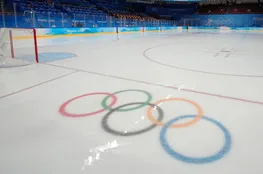Singaporean artist Robert Zhao Renhui's exhibition 'Seeing Forest' is showcased at the 60th Venice Art Biennale until November 24, 2024. This exhibition delves into the complex ecosystems of secondary forests, urging viewers to rethink their perceptions of nature. Through evocative imagery and thoughtful presentation, Zhao highlights the tension between natural environments and human intervention, inviting audiences to ponder the delicate balance of the natural world and the consequences of human actions.
'Seeing Forest' extends Zhao’s exploration of the blurred lines between reality and fiction, fostering a deeper understanding of the conflicting forces at play. In 'Seeing Forest,' Zhao presents a minimalist showcase with three new works that create a mysterious, forested zone born from imagination. The main component is a two-channel video depicting an imaginary secondary forest in Singapore, capturing scenes such as adventurous humans, migratory birds, and abandoned tents of illegal migrants. This forest is portrayed as both radically hospitable and hostile.
The footage, gathered via camera traps that capture movement, has been edited to provide a meditative look at the complexity of life in such environments. Accompanying this piece is a sculptural video installation consisting of various screens showing creatures visiting a makeshift watering hole designed as an abandoned dustbin, arranged around a deconstructed cabinet of curiosities. A large-scale digital print of the buffy fish owl, a bird native to Southeast Asia, completes the exhibition, offering insight into the region's natural history.
The exhibition explores how human urban design impacts the natural world, particularly within Singapore’s secondary forests. These spaces encapsulate histories of settlement, colonization, migration, and mutual co-existence among species. Zhao is deeply interested in the interconnection between nature and culture, particularly how human activities shape and are shaped by natural environments. Through his research, he seeks to challenge conservative notions that prioritize 'wild' and 'untouched' environments over spaces that have been transformed by human presence, like secondary forests.
These forests, occupying about 20% of Singapore’s land mass, support biodiversity and carbon capture but are often less protected than primary forests, despite their ecological importance. Zhao’s fascination with secondary forests stems from their ability to reveal layers of history and resilience. For instance, the Gillman secondary forest contains remnants of an old plantation alongside evidence of more recent human activity, such as a migrant worker’s abandoned tent. These forests are populated by recurring wildlife visitors, illustrating a harmonious co-existence.
Zhao’s Venice presentation aims to immerse viewers in the forest's rich sensory world, encouraging them to appreciate its complexity beyond factual statements. Overall, 'Seeing Forest' fits within Zhao’s broader artistic practice and his long-standing research into Singapore’s secondary forests. By spending years exploring these spaces, Zhao hopes to convey a deeper and more genuine representation of these environments through his artwork.
























